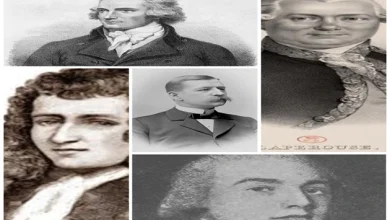Language as a culture in Nigeria

The relationship between language, food and culture in a society is inseparable. Language is the bedrock through which individual groups in society are identified. Language is the verbal expression of culture; so, language is part of culture. And Olivia, states that the language a group of people speak discloses a lot of information about them. Hence, Collins expressed the relationship between language and culture in 3 ways; culture is partly created from its language: most culture of a people was verbally transmitted. The folktales and wise-sayings, its history, wisdom and ideals are all product of language.
A language symbolizes its culture. A flavour or the beauty of culture is given through language. Therefore, the language that exists with its culture from the beginning will best express the culture. Therefore, when speakers of different language interact closely. It is typical for the language to influence one another. The influence of culture is so powerful on the language people speak so much so that culture at times stimulate the kind of words to be used by men or women in a society. For example, in lgbo society, there are some words used by only men and some used by only women.
Anabofa (1994) acknowledged the fact that symbols play an important role in showing social and religious facts about who they play roles such as maintenance of order and coherence, as a medium of communication and the preservation of knowledge which are transferred from one generation to another generation. Man needs order and coherence in whatever he does and this can be achieved by the use of symbols. Perceptions, emotional and religious experiences are put into symbolic forms which could be in form of language, work of art, icons music, prayers and incantations during rituals.
One of the embracing roles of symbols is that of communication. The need for inter and intra personal communication could be regarded as the most important factor that generate the use of symbols. Human beings are always communicating their thoughts, feelings and experiences not only to other persons but also to themselves. In Yoruba culture for example, three is known as ‘eeta’ but literally means “casting away” or “complete rejection”. They do not want to be cast out hence do not appreciate the use of that number.
They do not offer three things to a person, especially a guest. If such is done, it will be interpreted to mean that the host is casting his guest or any other person away. However, as Naboja (1994) pointed out, members of the Ogboni Society take pleasure in giving three items to fellow members. They do this in order to distinguish themselves from non-initiates. They regard themselves as different from all others as such they do things in their own special way which is quite the opposite of the usual manner. On the other in Yoruba religious culture and understanding, eeta, three symbolizes strength, unity and oneness.
ln ldoma religious culture, “even” numbers are used for good purposes, and odd numbers are used for bad purposes or an issue that involves death or burial rites. Field studies among ldoma of Benue State. central Nigeria reveal that even numbers symbolize good life, peace or are used for good intentions or purposes, whereas odd numbers are associated with, or symbolize death, evil or misfortune. That is why the ldoma would not give any odd-numbered gifts, for instance, three, five, seven and the like.
Also, according to OdumaAboh, (I994), requirements for burial rites or ceremonies in the Otukpa district of ldoma society include among others, the presentation of items for the rites by in-laws and other persons which has to be in odd numbers. Such items are ‘eme’ (Kolanuts) in odd numbers that would be appreciated by the receiving party; one keg of palm wine; one goat of any colour; tubers of yarn; one gallon of palm oil etc. These items would be presented on the day set aside for burial rites by the in-laws. He further states that in marriage rites, Kolanuts presented have to be in odd number. The symbolism behind this belief and practice is to ensure that couple will not depart this world at the same time. Traditional rites are the only occasion that warrants the use of an item in odd numbers.
However, in lgbo traditional society, certain numbers symbolize different beliefs and such is widely respected. For example, Kolanut is well respected and acts as a medium for prayers and establishment of agreements and other rituals. Kolanut is eaten massively in the North. As a visitor to Nigeria, you will find it difficult to believe that it is not grown in the North because of the massive consumption rate. Among the lgbos of the Eastern Nigeria, Kola has been most valued as a cultural and rim its number portrays different meanings in lgbo culture. The concept of lgbo wisdom that “he who brings Kolanut brings life” completes the picture of inseparability of Kola in the lgbo world. Therefore, Oluobafemi in Abara (1994) summarized that “Kolanut is grown in the West (Yoruba land), eaten by North (Hausa-Fulani) and celebrated by the East (lgbo). There is no lgbo cultural symbol that has received an equal attention as the Kolanut “Oji lgbo” has more than two cotyledons or seed leave which is the material that is chewed. Oji Awusa or gworo-cola has only two cotyledons.
ln lgbo traditional rituals and ceremonies, the gworo is not a valid matter, only the lgbo Kola is acceptable. lgbo Kolanut is a custom that unites the lgbo. Both lgbo and Awusa Cola are regarded as having the same symbolism in general and private cases except on occasions like serious traditional ceremonies like marriage and sacrifice where only lgbo Kola is used. Kola with one cotyledon is a dumb Kola or “Oji Ogbu”. It is canal “Oji mmuo”, that is (Kola of the spirits). It is not eaten. Kola With cotyledons is equally a dumb Kola and it is not eaten.
This is the main reason why the lgbo do not use the ‘gworo’ for rituals or in serious traditional ceremonies. Kola with three cotyledons is called “Oji ike, Oji ikenga”, that is, Kola of the Valiant. Only warriors or brave men and consecrated or ordained persons are permitted to eat this Kola as a matter of principle. Kolanut with four cotyledons is called “Oii udonangozi”, “that is Kola of peace and blessing”. It is the normal Kola. Kola with five (5) cotyledons is “Oji ubarammadu, omumunaukwuoma” that symbolizes increases in procreation, protection and good luck. Kolanut with (6) cotyledons indicates communion with our ancestors, that is “0ji ndimmuo na ndimmadu jiri gbaandu”. The smallest part or cotyledon is not eaten but is thrown away for the ancestors to eat. In like manner, Kola with one cotyledon is not eaten by man, which means that it is not broken during ceremonies because it belongs to the ancestors, an attitude reminiscent of the direct link between the living and the dead in Igbo land
Language on the other hand is an essential heritage of any society. It is a powerful mode of communication aside from symbols. This is because language is not just a cultural trait but an essential one indeed. It’s the most important vehicle of a people’s culture. Apart from that, language is the most distinctive of all the traits which separate human beings from any other being conceivable. It is therefore, impossible to identify a culture separate of its language. This is because language according to Green Berg (I948), is that part of culture which more than any other, enables men not only to make their own experiences and learning a continuous one but as well enable one to participate in learning others past and present. Our indigenous languages have been transmitted from the ancient times through the present generation of Nigerians. It is interesting to note that whatever problems modernization have posed to these languages, they still continue to exist and are still being widely spoken by the people.
According Elugbe (I990): “Language is one of the, if not the most enduring artefacts of culture. Unless forced by conquest or by superior numbers, or by social, economic and political domination to give their language, a people can always have their history through their language”.
In Nigeria, three categories of people are often regarded as the majority groups and/or cultures. These are lgbo, Hausa and Yoruba. By implication the languages of these three groups are regarded as majority languages. On the other hand, other groups of people numbering more than three hundred whose population and influence are not as important as the other three are altogether regarded as minority groups and/or cultures and their languages as minority languages. However, Bleambo, considered minor languages as “those Nigerian languages that are not major” according to him, the major languages are in two groups being Hausa, lgbo and Yoruba on one hand and closely followed by the second, which comprises of Edo, Efik, Fulfulde, lgala, lzon, Kanuri, Nupe and Tiv. But in the Nigerian, parlance, Hausa, lgbo and Yoruba are considered as major languages.
These three major languages can be observed in Nigerian music industry, we cannot discuss about language without given details about its interactions. Music plays more role in language interaction and identify the culture of the people. In Igbo, we have some songs that were sang using Ibo language, which speak more of the culture of the people, likewise Hausa, Yoruba and other minor ethnic group in Nigeria.
The English based pidgin is another form of language expressed in Communication in Nigeria. The English based pidgin which is spoken in Nigeria was cultured in the Niger Delta region of the country. Many critics of the language argue that pidgin originated as a result of contact between European traders who came, sailing along the West African coast and met the peoples in the region of the lower Nigeria. Pidgin became stabilized somewhat when it began to acquire certain norms of meaning, pronunciation and grammar. Like elsewhere, Pidgin in Nigeria, initially had no native speakers, but at the moment, the language finds nativity, amongst its present-day users whose various regional language background provide the cultural inputs which influence the positive development of the language today.
Therefore, certain words from Western European languages of higher status influenced West African pidgin English, which had their meanings extended to produce some of the words we use as pidgin; e.g.
Pikin (Portuguese, meaning = small one, child, infant;
Hala (French, holloer) = yell or shout;
Sabi (Portuguese, Saber) = know/practical knowledge;
Allele (French, aller) = go/move.
These and many more are retained in the present-day Nigeria pidgin language and usage. Others beside the ones mentioned earlier are those loaned from Nigerian indigenous languages, which have not by themselves experienced changes or modifications like their Western European language counterpart; examples include local words adopted and are now used by the generality of speakers; words like:
Yanga (Hausa) = Pride/vanity,
Wowo (Edo/Delta) = Ugly, unattractive,
Oga (Yoruba) = Boss/master,
Agbero (Yoruba) = Motor park tout,
Wayo (Hausa) = Trick/deceit/sophistry,
Una (from the word unu) lgbo = (Plural for of you),
Shakara (Yoruba) = Show-off,
Tatajo (Edo/Delta) = Gossip/ tell-tale,
loo (Yoruba) = I beg of you/please, etc, all serving to enrich the vocabulary of Nigerian pidgin.
Again, we have examples of words belonging to everyday register which include foods, dress, insult, interjections, titles etc. Other expressions are some words which two base words or compound words are combined to form a coinage, giving an entirely new Words e.g.:
Taifes => to bear creased brows when upset
Waka jugbe lay => to roam aimlessly
Bad-maut => the art of conviction




